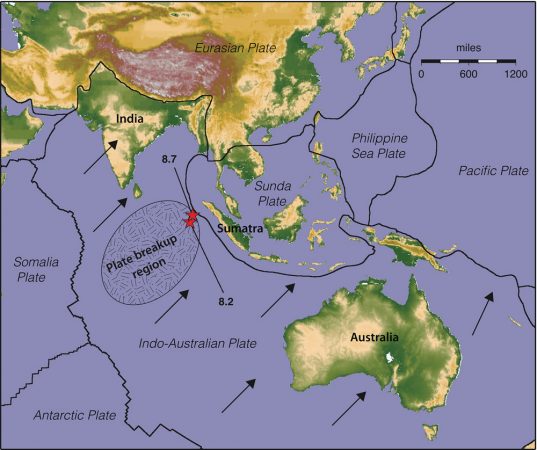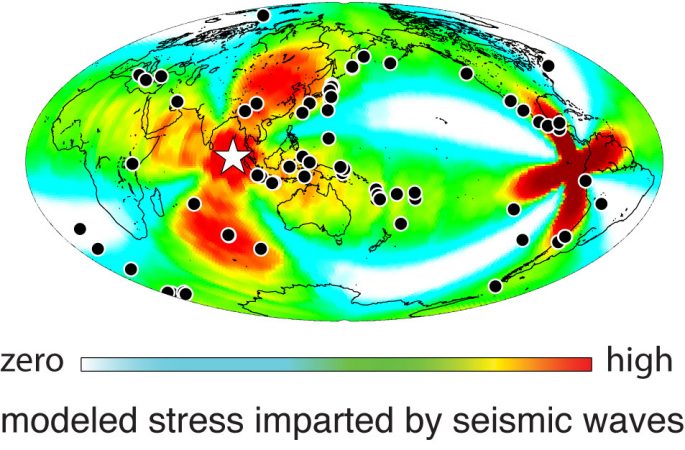Earth’s big breakup
Powerful motions beneath the Indian Ocean unleashed a series of earthquakes near Sumatra

In April, a powerful earthquake shook Sumatra, an island in the Indian Ocean that’s part of the country of Indonesia. Two hours later, a second earthquake — one nearly as powerful — hit the same region. This one-two punch had a big reach: It set off additional quakes as far away as Mexico.
The Sumatra earthquakes occurred near where a 2004 earthquake struck and caused a tsunami that killed hundreds of thousands of people. Big quakes also hit the area in 2005 and 2007. Scientists now suspect that all of the earthquakes there don’t only add up to a lot of shaking — those powerful tremors also indicate something may be changing deep underground.
These quake events put out “the greatest release of seismic energy anywhere on Earth in the past half-century,” Kerry Sieh told Science News. Sieh is a seismologist, or scientist who studies earthquakes, at the Earth Observatory of Singapore.
And, adds Sieh, who was not involved in the new studies, “You’d be nuts to think it was all over in offshore Sumatra.”
One of the giant tectonic plates that make up Earth’s crust appears to be cracking in two, according to new studies published in September. The studies also suggest that there will be more earthquakes as the breakup continues.

Tectonic plates are giant slabs of Earth’s crust that fit together like the pieces of a puzzle. But unlike puzzle pieces that nestle into each other comfortably, tectonic plates are always in motion. And when they move against each other, they release massive amounts of energy that we detect as earthquakes or other powerful natural events.
One of those plates, called the Indo-Australian plate, underlies all of India and all of Australia. It’s this plate that is giving Sumatra the shakes.
Matthias Delescluse compares the plate to a motorcycle with a sidecar, with each going in a different direction. Delescluse has just shown that the 2004 quake probably increased the frequency of quakes in the region since then. This physicist works at the École Normale Supérieure in Paris.
He says the part of the plate beneath Australia is like a motorcycle headed northeast. The part of the plate beneath India is like the sidecar. That “sidecar” can’t move north because the Himalayan mountains stop it cold. As a result, the two parts of the plate are headed separate ways — but not without a struggle. In millions of years, the single plate will have split in two.
For now, seismologists are watching the area carefully. Big earthquakes often strike without warning, and scientists suspect more seismic surprises are coming as Earth’s crust adjusts.
Power Words
tectonic plate One of the giant slabs that makes up Earth’s crust.
seismology The scientific study of earthquakes and similar phenomena.
physicist A scientist who studies matter and energy in different forms.
crust The outermost layer of rock on a planet. On Earth, it is especially that part above the mantle.







